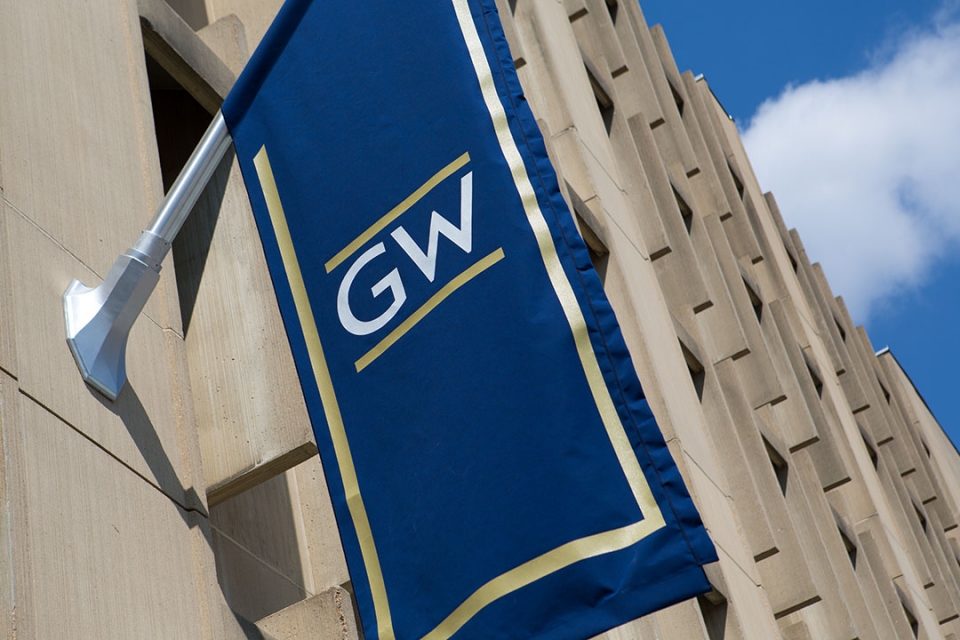Patients dealing with hypotension, or dangerously low blood pressure, can now be treated with a drug initially developed by George Washington University researcher Lakhmir Chawla from the School of Medicine and Health Sciences and the GW Medical Faculty Associates.
It was recently announced that the United States Food and Drug Administration approved the use of GIAPREZA™ (angiotensin II) injection to increase blood pressure in adults with septic or other distributive shock. The announcement was made by La Jolla Pharmaceutical Company, which entered into a worldwide license agreement for intellectual property rights with GW in 2014.
The drug approval is good news for the hundreds of thousands of patients who deal with life-threatening septic or other distributive shock in the United States every year. GIAPREZA™ was accelerated to a phase III clinical trial following a GW pilot study, shaving years off the approval process.
The drug also showed promise during La Jolla's open-label pediatric study. A patient experienced the reversal of life-threatening complications from what likely began as an influenza virus infection. GIAPREZA™ was recently made commercially available to patients in the United States.
Robert Miller, senior associate dean for research at the SMHS, said the licensing agreement with La Jolla embodies the school’s mission to introduce clinical and laboratory discoveries to the public at large.
“The research that we are doing in the School of Medicine and Health Sciences has broad benefits,” Dr. Miller said. “It’s not just that we are publishing a few papers in academic journals, but it’s that we are actually changing the way help is delivered and the treatments available.”
The intellectual property agreement is just one recent example of how the university and innovative researchers are seeking out commercialization opportunities to bring laboratory milestones to market. Steven Kubisen, managing director of the TCO, said the university has doubled the number of patents filed per year since fiscal year 2013.
“Corporations aren’t innovating the way they used to, and they’re looking at outside innovation, and they’re looking for universities to do it,” he said. “We want to see inventions come out of university research and have an impact on society, because that is more and more what we need to see happen in the United States and in the world.”
There have been several recent examples of successful technology commercialization agreements between the university and outside partners, and GW students, faculty and staff who have gone on to start their own companies based on technology developed at the university.
“GW-led innovations, including this newly-approved treatment for septic or other distributive shock, have the potential to save or improve the lives of thousands of people every year,” said Leo M. Chalupa, the university’s vice president for Research. “Identifying the right commercialization partner is a crucial step to move a discovery from the lab to the marketplace. These partnerships leverage the strengths of both parties and boost the university's impact and reach."
School of Engineering and Applied Science professor Michael Keidar discovered that cold atmospheric plasma targets cancerous cells without harming healthy biological tissue, a finding that could revolutionize cancer treatment. GW entered an agreement for Maryland-based US Patent Innovations, LLC (USPI) to develop a medical device based on this discovery. In September, GW continued this partnership by signing a $5.3 million corporate research sponsorship agreement with USPI to fund a new initiative to develop further biomedical applications for cold plasma technology. The funding will allow Dr. Keidar to expand his biomedical research.
In December 2016 GW and Vector Launch, Inc., a company that connects space startups and innovations with reliable and affordable space access, reached an agreement to license plasma thruster technology created by Dr. Keidar and researchers in his lab. Vector will develop inch-long thrusters to propel miniature satellites for commercial space use, and GW will continue to develop the next generation of the technology with corporate research sponsorship from Vector. The company is also sponsoring additional research in Dr. Keidar’s lab.
GW also executed a license agreement with Cardiaform, a medical device company, for technology developed by Igor Efimov, chairman of the SEAS’ Department of Biomedical Engineering. Dr. Efimov studies the mechanics of cardiovascular disease and develops novel therapies for heart diseases.
GW students also have been able to license their innovations. Ben Holmes, Ph.D. ’16, and Nathan Castro, Ph.D. ‘16, developed a 3D-printed, implantable device to substitute for a traditional knee replacement in young patients. The 3D-printed scaffold fosters bone and cartilage repair and regrowth. As SEAS students, the pair were inventors on patent applications filed by GW and after graduation they founded Nanochon, LLC to commercialize their work.
The TCO will work with researchers to explore partnerships within an investigator’s existing network or forge new relationships with professionals in relevant industries. Dr. Kubisen encourages innovative researchers to approach his office to talk about their options.
“Even if you don’t think you have anything call us, and we can discuss it, because sometimes initial ideas are not patentable, but if you take a different approach to it you can get something patentable,” he said. “I always say, if you are working on something interesting, call us.”
Researchers should discuss commercialization options with university representatives before publishing papers or giving presentations about discoveries that could have broad health implications, Dr. Miller said. Publication can impact an investigator’s ability to claim intellectual property and secure a patent.
The timeline for how long it takes a licensed technology to get to market varies depending on how it is categorized. It typically takes one to three years for licensed software to get to market, however pharmaceutical discoveries often face a wait time of 15 years or more, according to the TCO.
The work put in to protecting intellectual property and developing commercial products can have significant payoffs, including financial upsides for inventors and entrepreneurs, contributing solutions that save or improve lives, help the environment or address other critical societal needs.



